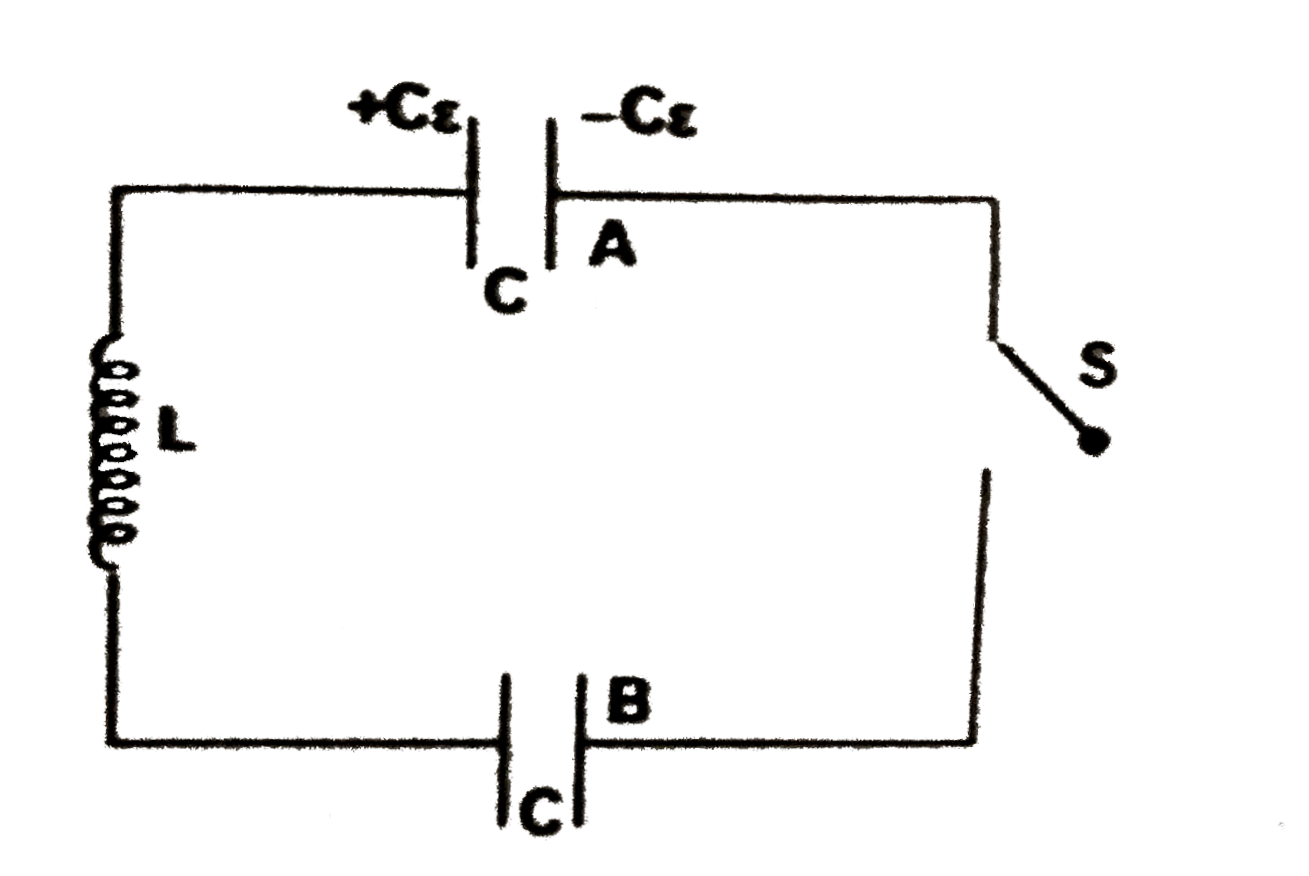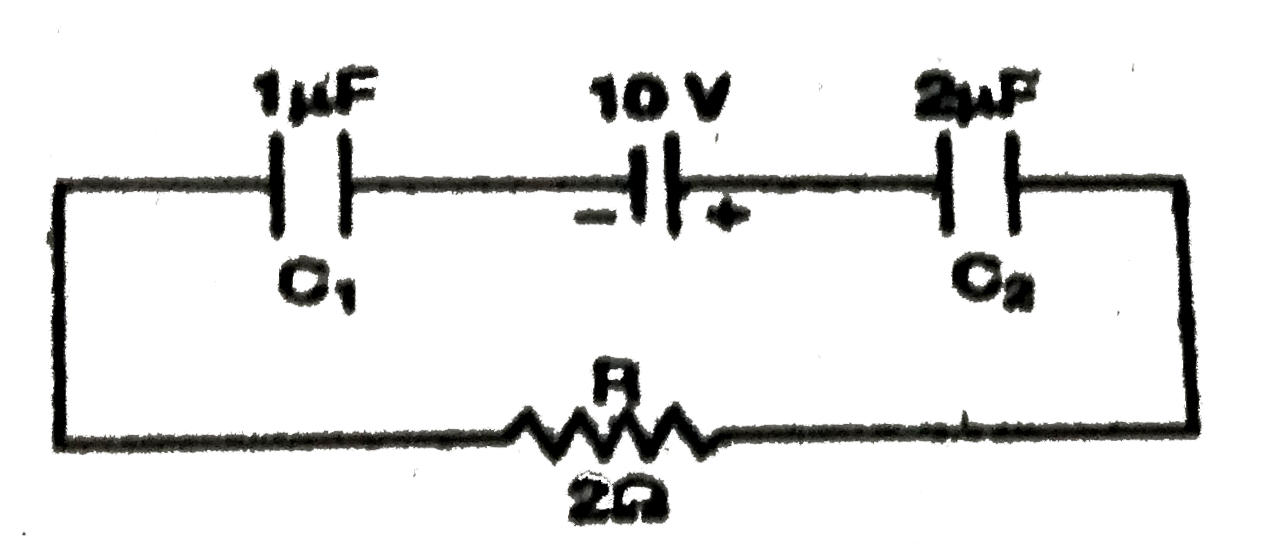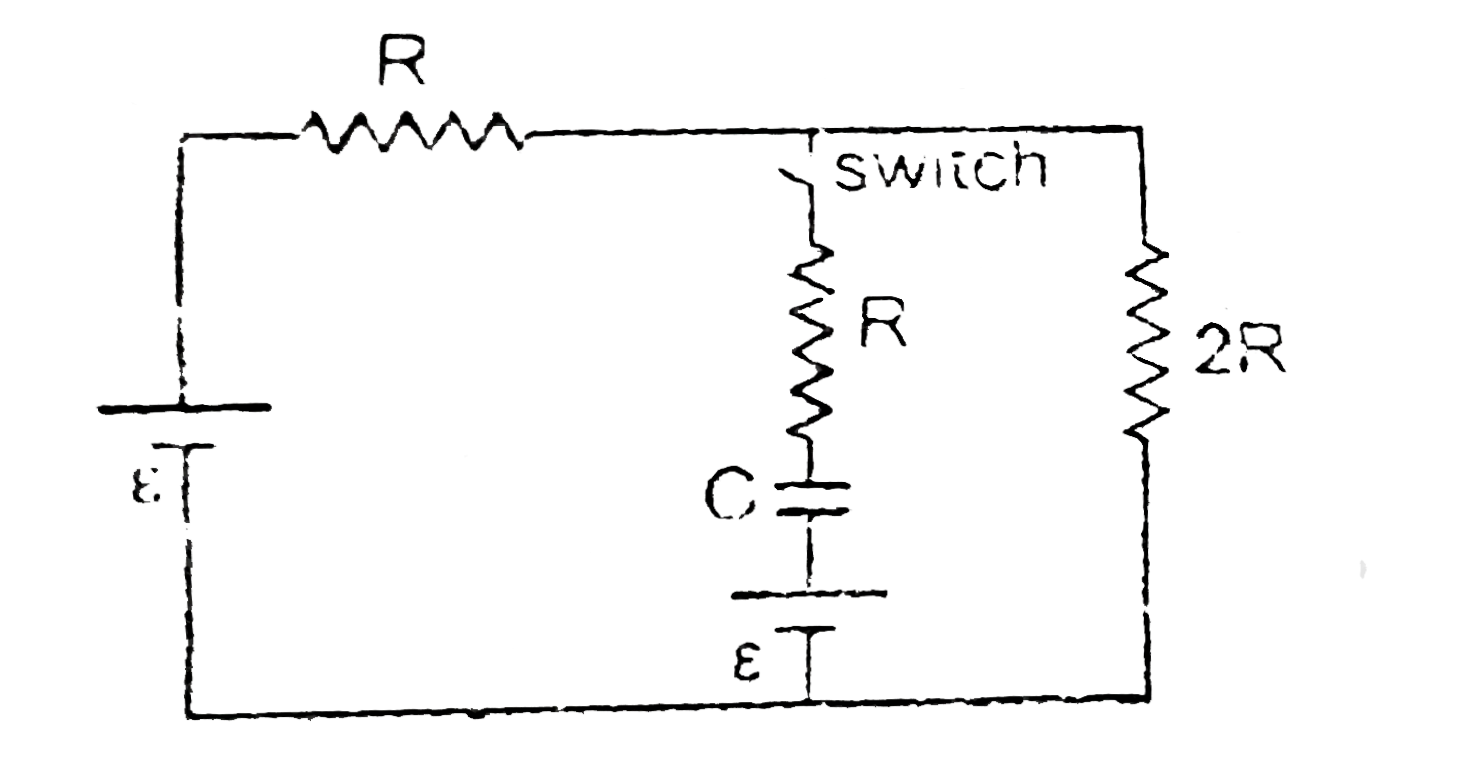A resistor, capacitor, switch, and ideal battery are in series. Originally the capacitor is uncharged. The switch is then closed, allowing current of flow
While the current is flowing, the potential difference across the resistor is
Increasing
Decreasing
Fixed
First increase then decreases
The correct Answer is:B
To solve the problem, we need to analyze the behavior of the circuit components when the switch is closed. Here’s a step-by-step breakdown:
Step 1: Understanding the Circuit
We have a series circuit consisting of a resistor (R), a capacitor (C), a switch, and an ideal battery (V). Initially, the capacitor is uncharged, meaning there is no voltage across it.
Hint: Remember that in a series circuit, the same current flows through all components.
Step 2: Closing the Switch
When the switch is closed, current starts to flow from the battery through the resistor and into the capacitor. The current (I) at this moment can be calculated using Ohm's law, but since the capacitor is uncharged, the initial current is at its maximum.
Hint: Think about how the capacitor behaves when it starts charging.
Step 3: Analyzing the Potential Difference Across the Resistor
The potential difference (V_R) across the resistor can be expressed using Ohm's law:
VR=I⋅R
Since the capacitor is initially uncharged, the entire voltage from the battery appears across the resistor at the moment the switch is closed.
Hint: Consider that as the capacitor charges, the current will change.
Step 4: Charging of the Capacitor
As time progresses, the capacitor begins to charge, which means the voltage across the capacitor (V_C) increases. The voltage across the resistor will decrease as the capacitor charges because the total voltage from the battery must equal the sum of the voltage across the resistor and the capacitor:
V=VR+VC
Hint: Recall that the sum of the potential differences in a series circuit equals the total voltage supplied by the battery.
Step 5: Conclusion on the Potential Difference Across the Resistor
Since the voltage across the capacitor increases as it charges, the voltage across the resistor must decrease. Therefore, the potential difference across the resistor (V_R) is decreasing over time.
Final Answer: The potential difference across the resistor is decreasing.
We have a series circuit consisting of a resistor (R), a capacitor (C), a switch, and an ideal battery (V). Initially, the capacitor is uncharged, meaning there is no voltage across it.
When the switch is closed, current starts to flow from the battery through the resistor and into the capacitor. The current (I) at this moment can be calculated using Ohm's law, but since the capacitor is uncharged, the initial current is at its maximum.
The potential difference (V_R) across the resistor can be expressed using Ohm's law:
VR=I⋅R
Since the capacitor is initially uncharged, the entire voltage from the battery appears across the resistor at the moment the switch is closed.
As time progresses, the capacitor begins to charge, which means the voltage across the capacitor (V_C) increases. The voltage across the resistor will decrease as the capacitor charges because the total voltage from the battery must equal the sum of the voltage across the resistor and the capacitor:
V=VR+VC
Since the voltage across the capacitor increases as it charges, the voltage across the resistor must decrease. Therefore, the potential difference across the resistor (V_R) is decreasing over time.
Topper's Solved these Questions
- CIRCUITSBOOK - RESNICK AND HALLIDAYCHAPTER - CIRCUITSEXERCISE - Practice Questions (Matrix Match)
4 Videos
- CIRCUITSBOOK - RESNICK AND HALLIDAYCHAPTER - CIRCUITSEXERCISE - Practice Questions (Integer Type)
3 Videos
- CIRCUITSBOOK - RESNICK AND HALLIDAYCHAPTER - CIRCUITSEXERCISE - Practice Questions (More than One Correct Choice Type)
12 Videos
- CENTER OF MASS BOOK - RESNICK AND HALLIDAYCHAPTER - CENTER OF MASS EXERCISE - Practice Questions (Integer )
4 Videos
- CIRCULAR MOTIONBOOK - RESNICK AND HALLIDAYCHAPTER - CIRCULAR MOTIONEXERCISE - CHECK POINTS
6 Videos
Similar Questions
Knowledge Check
A resistor, capacitor, switch, and ideal battery are in series. Originally the capacitor is uncharged. The switch is then closed, allowing current of flow
While the current is flowing, the potential difference across the capacitor isAIncreasingBDecreasingCFixedDFirst increase then decreasesIf the switch is closed then current will flow.
 Afrom A to BBfrom B to AC0Dcannot say unless resistance of galvanometer is given
Afrom A to BBfrom B to AC0Dcannot say unless resistance of galvanometer is givenWhen the switch is closed, the initial current through the 1Ω resistor is
 A2AB4AC3AD6
A2AB4AC3AD6
Initially capacitor is uncharged at t=0 switch is closed. Charge on capacitor when current in the circuit is 10% of maximum current :

View SolutionIn the circuit shown, the capacitor is initially uncharged. The switch S is closed at t = 0. Time after which voltage across capacitor and resistor are equal is:

View Solution
Initially capacitor 'A' is charged to a potential drop ε and capacitor B is uncharged At t=0, switch S is closed, then the maximum current through the inductor is
View SolutionA 10V battery is connected to two capacitors C1 and C2 and a resistor R. When the capacitors are fully charged, then the potential difference across the resistor will be

View SolutionA resistor allows a current of 0.02 A to flow through it when there is a potential difference of 10 V between its ends. The resistance of resistor is
View Solution

